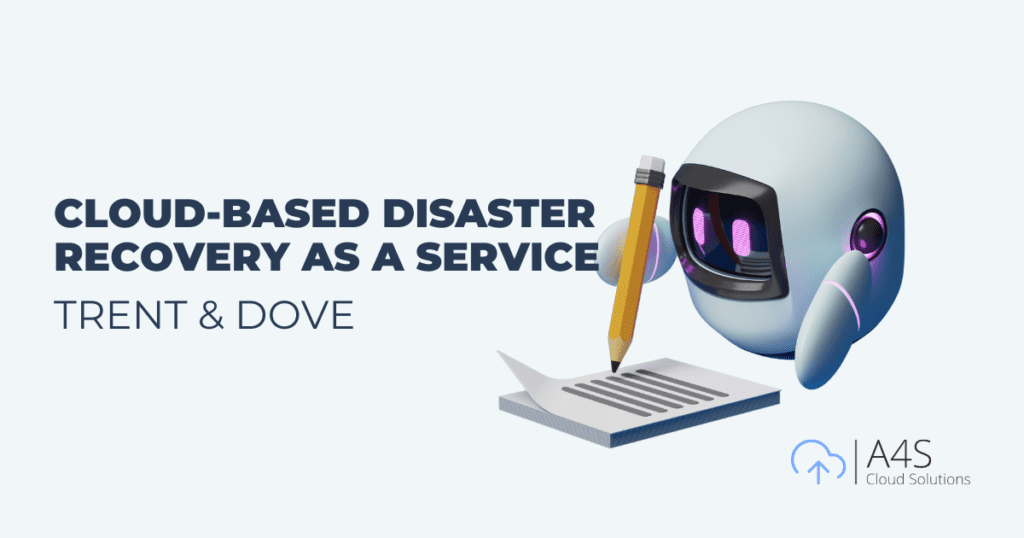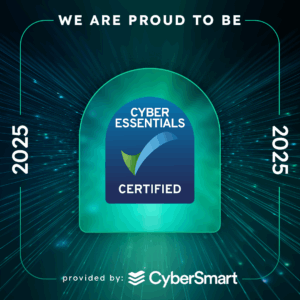The A4S Cloud Solutions team delivered a ‘Disaster Recovery As A Service’ (DRaaS) using the Microsoft Azure Site Recovery with real time monitoring alerting is provided using the A4S Lighthouse Service.
A managed service is also implemented to continuously monitor performance and health, support is provided for any incidents or upgrades when required.
A rehearsal was undertaken to provide assurance to the client’s internal audit function.
Trent & Dove has a short deadline to replace their existing DRaaS delivered using the capable Zerto platform which has been in service for several years.
Levels of disaster recovery protection would be required to ensure relevance and alignment to business need.
Disaster Recovery is an essential part of any IT infrastructure, but it comes with its own set of challenges. Here are some common challenges:
Overall, disaster recovery is a complex and resource-intensive process that requires significant planning, resources, and ongoing maintenance to be effective. Organisations must carefully consider the challenges they may face and develop a comprehensive disaster recovery plan that addresses their unique business needs and risks.
The A4S DRaaS offering ensures the client can focus on delivering services to its own customers safe in the knowledge their disaster recovery capability is continuously monitored and maintained.
The A4S DRaaS offering is based on Microsoft Azure Site Recovery (ASR) which is fully integrated with the Azure cloud service, very capable and cost effective.
Here are some of our key service features:
Our DRaaS benefits mainly focus around allowing the client to concentrate on delivering their own internal business services whilst we ensure DR protection is efficient, cost effective and reliable.
We have listed some more of the key benefits below:
Overall, DRaaS provides organisations with a cost-effective, scalable, accessible, secure, reliable, and time-saving way to manage their backup data in the cloud.
Trent & Dove IT teams are now able to focus on the delivery of IT services to their own internal customers and tenants whilst knowing the A4S IT Operations Teams are maintaining disaster recovery capability for their business data and systems.
A4S continue to maintain the clients DR service and take part in routine recovery tests for the purposes of assurance.
Trent and Dove Housing is an amazing business that provides life changing services to it’s clients and truly has an incredibly positive social impact.
Trent and Dove Housing is a charitable organisation who’s staff are devoted to improving the lives of it’s tenants and other in the surrounding areas.
We recommend reviewing their ‘about us’ section for more information: https://www.trentanddove.org/about-us/
“I am very impressed with the Disaster Recovery as a Service (DRaaS) solution provided by the A4S team.
The ability to replicate our critical systems and data to the cloud in real-time, and the flexible recovery options available to us, have given us the confidence that we can recover quickly from any disaster.
The cost savings, scalability, and security benefits of the DRaaS have exceeded our expectations, and the testing and validation process has given us peace of mind that our disaster recovery plan is effective and can be executed successfully in the event of a disaster.
Overall, we are extremely satisfied with the A4S provided DRaaS service and the level of service and support provided.”
Cloud-based disaster recovery involves replicating an organisation’s IT systems and data to remote cloud servers, ensuring that in the event of a disaster, operations can be quickly restored. This approach uses virtualisation and automation to provide rapid failover and recovery, minimising downtime and data loss.
By implementing Disaster Recovery as a Service (DRaaS), Trent & Dove achieved reliable data protection and rapid recovery capabilities. This ensured their critical systems and data were replicated in the cloud, allowing them to recover quickly from disruptions, maintain business continuity, and reduce the impact of potential disasters.
The key benefits of disaster recovery in the cloud include improved scalability, cost efficiency, automatic failover, and enhanced security. Cloud-based solutions eliminate the need for expensive physical infrastructure, allow for flexible resource allocation, and provide robust protection against data breaches and natural disasters.
Without a cloud-based disaster recovery plan, organisations face risks such as prolonged downtime, significant data loss, higher recovery costs, and increased vulnerability to cyberattacks and natural disasters. These risks can lead to severe operational disruptions, financial losses, and damage to the organisation’s reputation.
Disaster Recovery as a Service (DRaaS) ensures compliance with industry regulations by implementing secure data encryption, regular backups, and audit trails. Cloud-based DRaaS providers often comply with standards like GDPR, HIPAA, and ISO, helping organisations meet legal requirements and protect sensitive information throughout the recovery process.

To see the wide range of projects we’ve worked on, click here to read other case studies.
